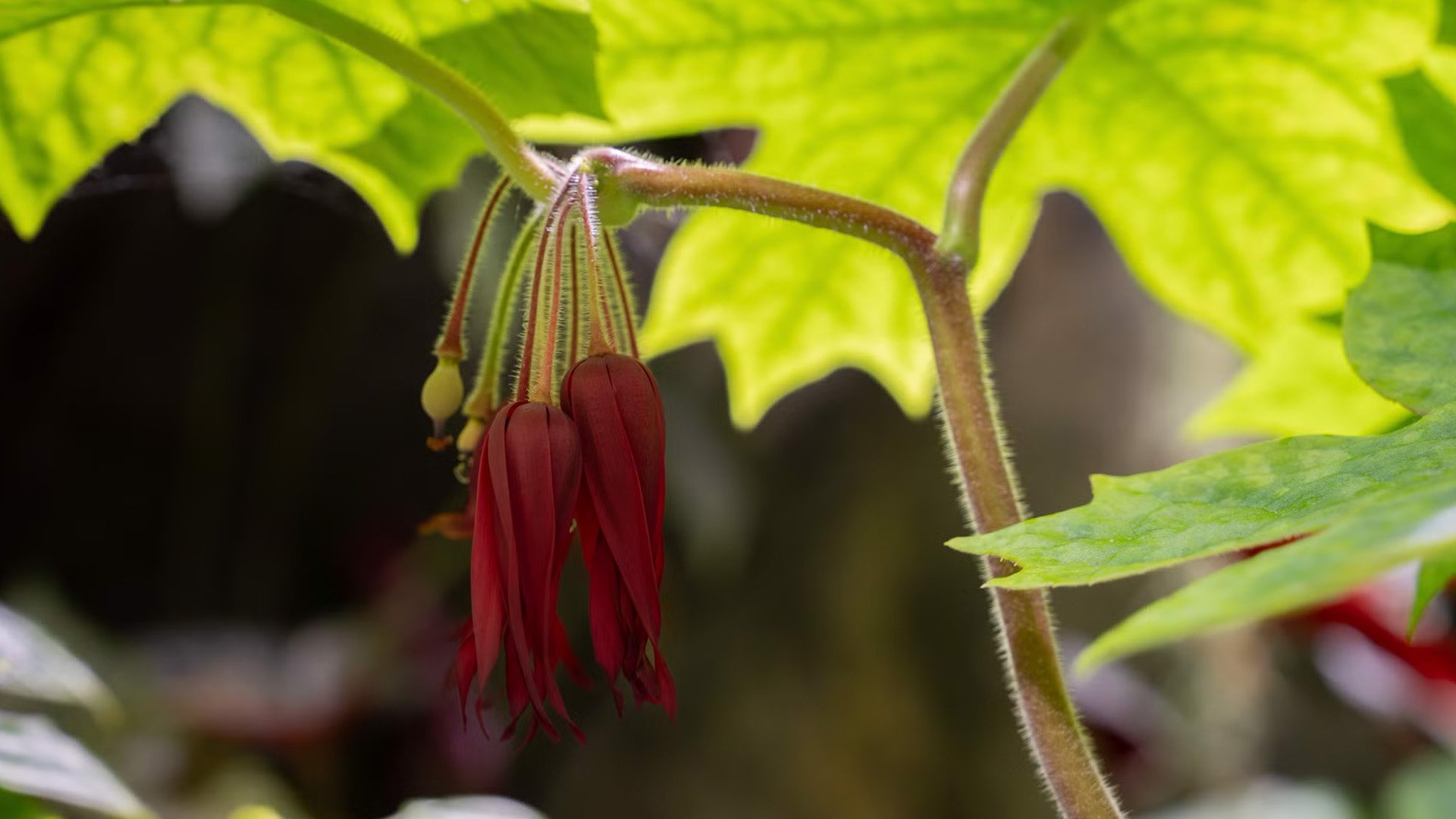
Even with its huge, heart-shaped leaves, and striking thin, white, flower spikes, you might easily dismiss this relative of the black pepper (Piper nigrum) as part of the boring, green background. But, wait! Look, or smell again!
Native from southern Mexico through Colombia, Mexican pepperleaf (Piper auritum) bears multiple, minuscule, faintly-fragrant florets, to attract its beetle and fly pollinators, but its real scented secret is within! All tissues of the plant contain high concentrations of safrole (say it: saff-froll), a volatile organic compound with a sweet ‘candy-shop’ aroma, produced by plants to repel hungry herbivores. Essential oil extracted from its leaves can contain over 70% safrole, and essential oil extracted from its flower spikes over 90% safrole!
 This photo is a magnified view of three Mexican pepperleaf flower spikes: immature (left), flowering (centre), and past-flowering (right). Each flower spike is composed of thousands of tiny florets or reduced flowers. Each of the diamond-shaped demarcations in the leftmost spike is a developing floret. Each floret has four stamens, three carpels, but no petals, relying on scent and spike placement to attract beetles and flies as pollinators.
This photo is a magnified view of three Mexican pepperleaf flower spikes: immature (left), flowering (centre), and past-flowering (right). Each flower spike is composed of thousands of tiny florets or reduced flowers. Each of the diamond-shaped demarcations in the leftmost spike is a developing floret. Each floret has four stamens, three carpels, but no petals, relying on scent and spike placement to attract beetles and flies as pollinators.
Produced by many diverse plant genera, including familiar spice plants such as cinnamon (Cinnamomum spp.), nutmeg (Myristica fragrans), and star anise (Illicium verum), the safrole in the sassafras tree’s (Sassafras albidum) root bark was also one of the main flavouring components of root beer, hence the Mexican pepperleaf’s alternate common name for its aroma: root beer plant! (Confusingly, sarsaparilla and similar sounding and smelling beverages, such as Sarsi, were flavoured with an unrelated tropical vine, Smilax ornata, also called sarsaparilla, but now replaced by other similar natural and artificial flavourings.)
Safrole as a food and beverage flavouring has been banned by the United States Food and Drug Administration (FDA) since the 1960s, after a study found that the consumption of large amounts of safrole by rats resulted in a low incidence of liver toxicity and cancers. However, the US currently places the human cancer risk of average daily exposure to safrole in spices as equivalent to the risk of the amount of another mild carcinogen, d-Limonene, in a half-cup of orange juice, and three times less than the risk of caffeic acid in coffee! Presently, the safrole in commercial root beer beverages and flavourings has been largely replaced by similar aromatic compounds such as oil of wintergreen.
Across its native range however, people have been using and consuming Mexican pepperleaf for centuries. In Mexico, Mexican pepperleaf is known as hoya santa, literally, ‘sacred leaf’, for its medicinal properties. Across Mesoamerica and the Caribbean, its leaves and roots are used to treat a plethora of ills, from chest pain, headaches, high blood pressure, snake bites, low breast milk production and other ailments. Many households grow the plant in their backyard gardens, cooking and eating the young leaves and stems, using the leaf as an edible wrapper for tamales, cheeses, or meats, and as a flavourful herb in everything from sauces and stews, to hot chocolate and ice cream!
 A spindly shrub with thick, fleshy, jointed stems and broad heart-shaped leaves, Mexican pepperleaf is a vigorously growing plant that proliferates so easily from seed, root suckers, rhizomes, and nodal cuttings that it has been declared an invasive weed in Tonga, Samoa, and Hawai’i.
A spindly shrub with thick, fleshy, jointed stems and broad heart-shaped leaves, Mexican pepperleaf is a vigorously growing plant that proliferates so easily from seed, root suckers, rhizomes, and nodal cuttings that it has been declared an invasive weed in Tonga, Samoa, and Hawai’i.
You can find Mexican pepperleaf growing rampantly through parts of the Discovery Garden in World of plants; however, to properly smell the root beer-like fragrance of the Mexican pepperleaf, one must crush and tear the leaves to release the aromatic compounds!
To do this without being cited for plant molestation, come on our free A Sensory Stroll: What’s that Smell guided tour, where expert guides will let you see, touch, and smell the Mexican pepperleaf and seven other fragrant and funky plants! As one of Gardens by the Bay’s six FREE Nature and Sustainability weekend walking tours supported by Keppel, this tour will open your nose to the aromatic wonders of the plant kingdom and your eyes to how plants use these fragrant compounds to attract, repel, and communicate with humans, animals and each other!
Are you part of a local institute of higher learning, community group, or social service or public agency and want to arrange a tour for your organization? Register your interest here!
Written by: Janelle Jung, Senior Researcher (Research and Horticulture)
A transplanted pake (Hawai'i-born Chinese), she's finding her own Singaporean roots. Every plant has a story, and Janelle helps discover and share these with colleagues and guests, hoping to spark a mutual plant passion! Ask her what plant she named her cat after!

/1000x1000-thumb-Teague%27s-Pleurothallis-1.jpg)

/1000x1000-thumb-waqanki-01.jpg)